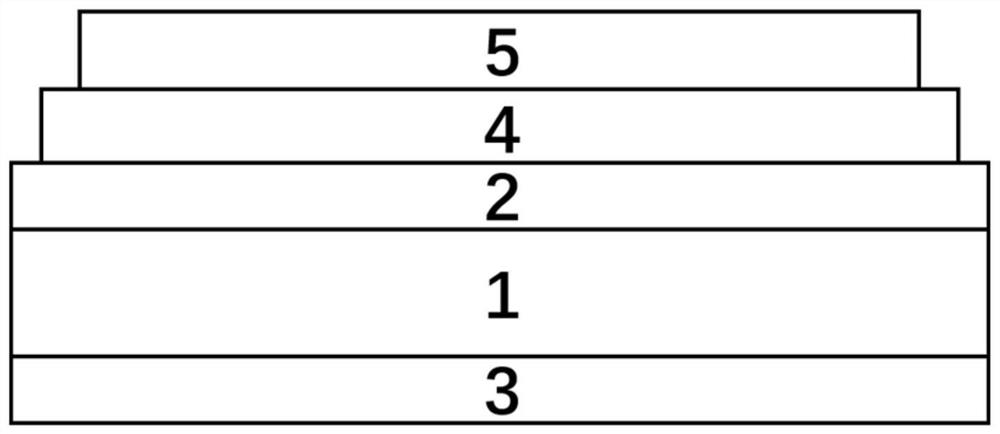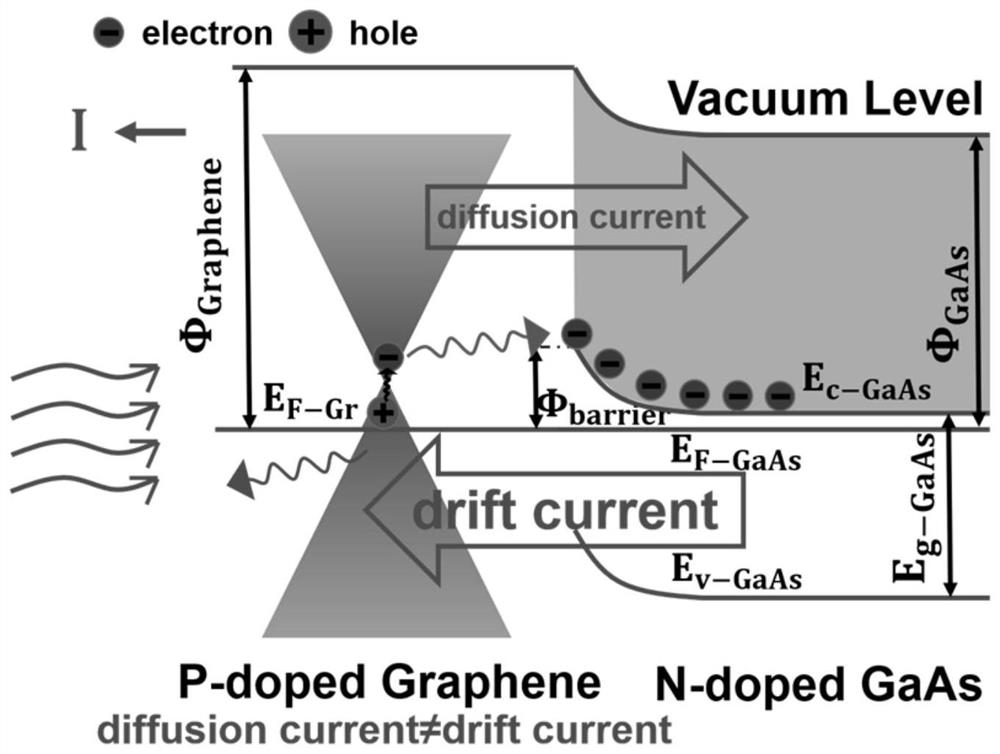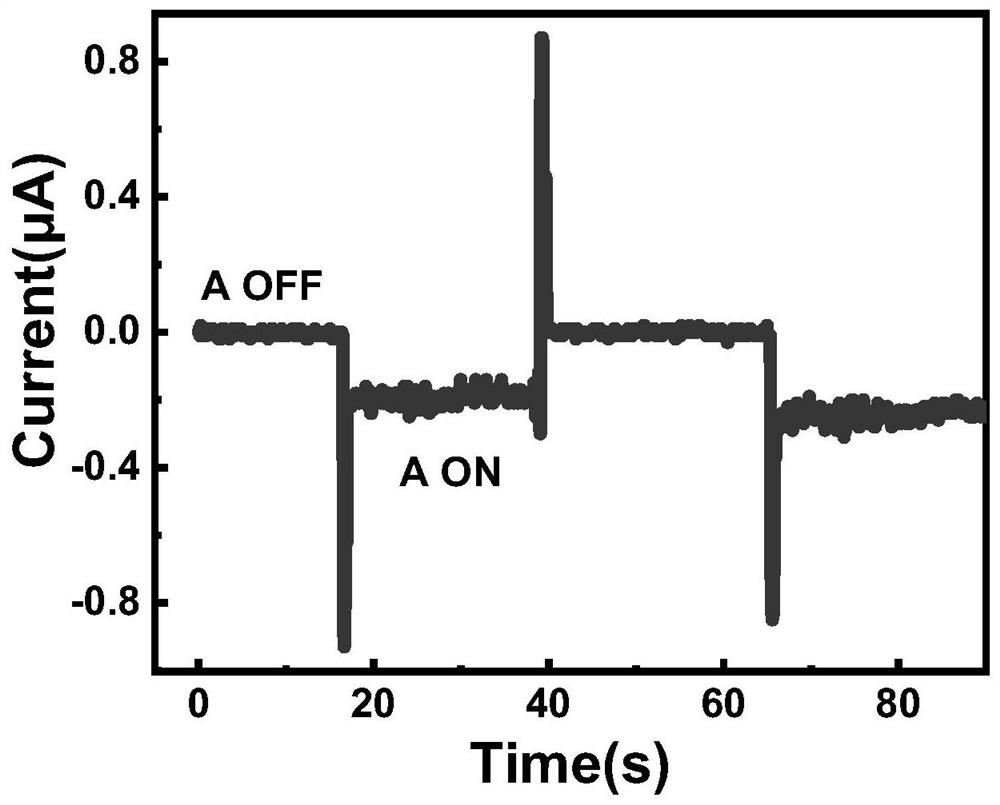Graphene/monatomic layer GaS/GaAs radio generator and manufacturing method thereof
A single atomic layer, graphene layer technology, applied in circuits, electrical components, circuit devices, etc., can solve problems such as difficult preparation and large-scale integration
- Summary
- Abstract
- Description
- Claims
- Application Information
AI Technical Summary
Problems solved by technology
Method used
Image
Examples
Embodiment 1
[0024] 1) After making the first electrode (titanium gold) on the back of GaAs, the GaAs wafers were cleaned as follows: first ultrasonically cleaned with acetone for 5 minutes, then cleaned with deionized water three times, and then with dilute hydrochloric acid solution to remove oxidation layer, then wash off the diluted hydrochloric acid, then oxidize the surface of GaAs with hydrogen peroxide solution, repeat the deoxidation and oxidation operation 3-7 times, passivate the GaAs sample with 18% ammonium sulfide solution, and finally use deionized water cleaning completed;
[0025] 2) Take a piece of copper-based graphene spin-coated with PMMA, and cut it into a regular shape of 0.5cm×0.5cm. Place the cut copper-based graphene on the upper surface of the copper foil etching solution. Transfer the etched graphene+PMMA layer to deionized water for cleaning with a glass slide, and transfer and clean for 3-5 times;
[0026] 3) Transfer the cleaned graphene to the front of gal...
Embodiment 2
[0029] 1) After the first electrode (Ti / Au) was fabricated on the back of GaAs, the GaAs wafers were cleaned as follows: first ultrasonically cleaned with acetone for 5 minutes, then cleaned with deionized water three times, and then removed with dilute hydrochloric acid solution. The oxide layer was washed off with dilute hydrochloric acid, and then the surface of GaAs was oxidized with hydrogen peroxide solution. After repeating the deoxidation and oxidation operations for 3-7 times, the GaAs sample was passivated with 12% ammonium sulfide solution for 15 minutes. Deionized water cleaning is completed;
[0030] 2) Take a piece of copper-based graphene spin-coated with PMMA, and cut it into a regular shape of 0.5cm×0.5cm. Place the cut copper-based graphene in the copper foil etching solution (the graphene side faces up). Transfer the etched graphene+PMMA layer to deionized water for cleaning with a glass slide, and transfer and clean for 3-5 times;
[0031] 3) Transfer the...
Embodiment 3
[0034] 1) After the first electrode (Ti / Au) was fabricated on the back of GaAs, the GaAs wafers were cleaned as follows: first ultrasonically cleaned with acetone for 5 minutes, then cleaned with deionized water three times, and then removed with dilute hydrochloric acid solution. The oxide layer was washed off with dilute hydrochloric acid and then oxidized the surface of GaAs with hydrogen peroxide solution. Repeat the deoxidation and oxidation operations for 3-7 times, then passivate the GaAs sample with 18% ammonium sulfide solution for 30 minutes, and finally use deionized water cleaning completed;
[0035] 2) Take a piece of copper-based graphene spin-coated with PMMA, and cut it into a regular shape of 0.5cm×0.5cm. Place the cut copper-based graphene in the copper foil etching solution (the graphene side faces up). Transfer the etched graphene+PMMA layer to deionized water for cleaning with a glass slide, and transfer and clean for 3-5 times;
[0036] 3) Transfer the ...
PUM
| Property | Measurement | Unit |
|---|---|---|
| thickness | aaaaa | aaaaa |
Abstract
Description
Claims
Application Information
 Login to View More
Login to View More - R&D
- Intellectual Property
- Life Sciences
- Materials
- Tech Scout
- Unparalleled Data Quality
- Higher Quality Content
- 60% Fewer Hallucinations
Browse by: Latest US Patents, China's latest patents, Technical Efficacy Thesaurus, Application Domain, Technology Topic, Popular Technical Reports.
© 2025 PatSnap. All rights reserved.Legal|Privacy policy|Modern Slavery Act Transparency Statement|Sitemap|About US| Contact US: help@patsnap.com



